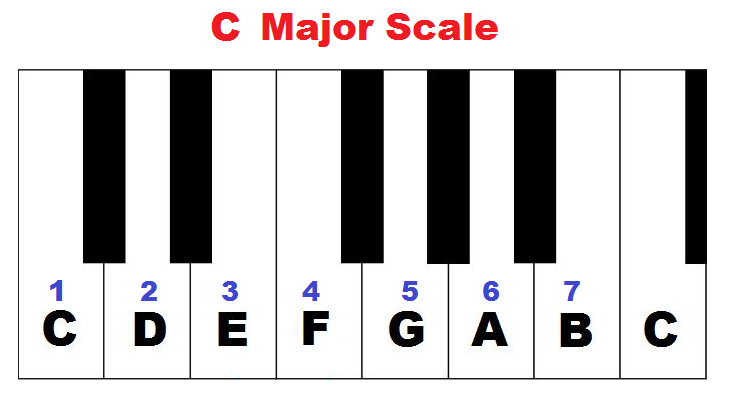Yesterday in class, the topic of altered chords was raised, something I had never come across before. Since that lesson, I’ve been thinking a lot about them. The only way I could think to describe it and, I guess get my head around it, was to think of them as ‘wild cards’. Although I did like the concept of these wild cards at first, the more I thought about them, the more intrigued I became about them. Before I go into all of that, let me first explain the gist of what altered chords are:
Basically, what I know from my limited knowledge of altered chords is that they include a triad played over the top of a major (or minor too, maybe..?) seventh. By way of example, let’s use the C major scale, because it makes my life easier.

As you can see, each note in the scale is numbered, one to seven. A basic C major chord consists of three notes- C, E, and G, aka 1, 3, and 5. So because an altered chord needs to include a seventh, it means it has to include the note B. Now, you can even go a bit crazy here, because you can play that B above middle C, as is shown in the picture, OR you can do what’s called an inversion; you can play the B below middle C (which isn’t pictured in the…picture, but it’s there, somewhere). You don’t have to, it’s just to mix the sound up a bit, make it a bit less basic or everyday, I don’t know. Anywho, that’s the foundation of the altered chord. From that, I believe you can play any triad (three note chord) from any scale over the top of that Cmaj7 chord. So Ebmajor, Dflat minor, etc.
Because you have free range to just play whatever here, I expressed to my teacher that it might be more common to clash with the other musicians when using these altered chords. For instance, say I was told to play a Cmaj7alt chord, and I decided to play Ebmajor over the top of that. But say a guitarist for instance, a fellow musician in this piece of music, was reading from the same chord sheet, and was thereby instructed to play a Cmaj7alt chord as well. He/she might play Cmaj7 followed by D minor. Ooh, nasty. And this is where I begin to appreciate altered chords. You see, as a pianist, I’m used to having a structure within a song, a basic chord progression, for instance, and a melody. I can, with time as I’m more familiar with the piece, add my own flair to it, adding inversions, as I mentioned, where appropriate, perhaps to create a richer, fuller sound. I might tweak the dynamics according to which part of the song I want to put emphasis on. So you see, there are many ways a musician can make a piece his or her own, without necessarily changing the song beyond recognition. See, despite the many changes I might make to a piece of music, I stick to the basic structure in some way, be it the chord progression or melody; it’s improvisation within a strong, clear structure. But these altered chords open another door. For however long that altered chord is held down for, nothing is set in stone in that time- there’s no right or wrong in accordance to that chord sheet.
So I concluded yesterday that you’d just have to work out which triad would be played over the maj7 in the left hand before a final/completed performance. I therefore also concluded that altered chords are very misleading, but in the best way. How? Because they give the illusion of improvisation when they’re actually very, very well considered and thought out, to which both my teacher and I considered,
‘Isn’t that kind of the point?’.